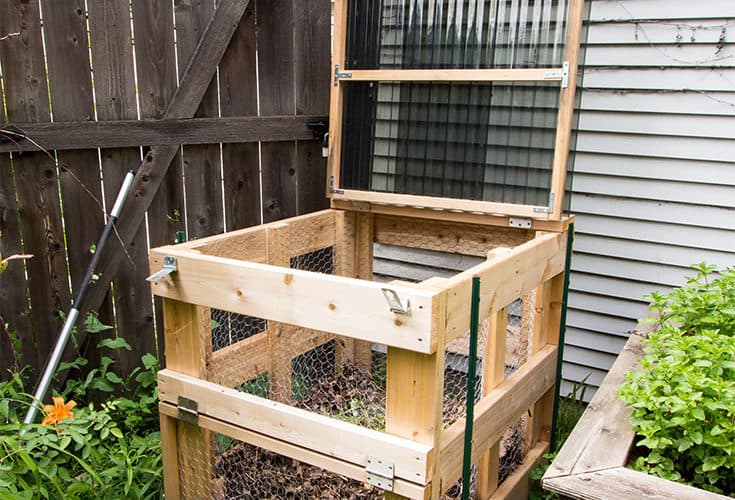Composting is a great way to cut down on kitchen scraps and fertilize your garden. When organic materials decompose, they leave behind rich nutrient filled soils that are invaluable to vegetable gardens and flower gardens.
Although any organic material will eventually decompose, the point of making a compost pile is to help it decompose faster. Heat, air, water and microorganisms help speed up the composting process. There are many ways to make a successful compost pile, but we will be using the three-section system.
Layers Upon Layers: The Process of Composting
A three-section system is a great setup for a compost pile. To section off your compost you can have three wooden barrels, you can build a wooden structure or you can just have three different piles. The first section should be filled with soil, while the other is filled with lawn clippings, dead leaves and other “brown material.” The middle section should be left empty, this is where you are going to start layering.
The first layer contains organic materials like kitchen scraps; lawn clippings that are still green make good filler too. Some people just throw their kitchen scraps in the bin every day, then layer the pile at the end of the week. Others collect all their scraps in a separate bucket and add them to the pile when the bucket is filled. Either way works fine.
Once you have a good thick layer (6-12 inches deep) of organic material, then it’s time to add a layer of brown materials. This will be a thin layer (3-6 inches). Finally, add a layer of soil. The thicknesses can vary, but it’s usually best to stick to a two parts organic materials to one part brown materials and one part soil. After every soil layer, water your compost — this will help the microbes that break down the soil.
Organic kitchen scraps of all kinds can go in the compost pile, but certain materials are better than others. Banana peels, egg shells and coffee grounds are the best materials for a compost, along with parts of most vegetables. Meat scraps take a very long time to decompose and smell awful. Citrus fruits should also be avoided, because they add too much acid to the soil and can be damaging to plants. Manure can also be added, and can add great nutrients to the soil. Only add manure from grain eating animals, not your dog or cat.
You’ll eventually end up with a pile about 3-5 feet high. As the layers break down, the pile will become flatter. The decomposing has begun!
Caring for Your Compost Pile
Using a pitchfork, turn your compost pile no more than once a week and no less that once a month. This will help air circulate through the compost. The compost should be heating up and breaking down.
If your pile is not heating up, it may be that the pile is too small. Spread out the materials and add more layers. It may also be too dry, be sure to water your pile after every soil layer.
If your compost is smelling particularly bad, it may mean that the compost is not getting enough air. This can be due to over-watering or being too compact. If your pile is over-watered due to rain, cover the pile with a tarp or put a lid on the structure. Turn the pile often and add extra dry materials. This should help the circulation.
You may notice that there are flies, ear wigs and bugs all around your compost pile. These bugs bring nutrients to the soil. This means your compost is working!
After 3 months of caring for your compost, you should see it breaking down. Most of the pile should be crumbly and dark. Pick it up and rub it between your fingers it should feel like dirt and dry leaves. The whole pile should be brown and none of the food scraps should be recognizable. Now its time to feed that garden bed!
References:
eHow: How To Begin Compost Pile
University of Illinois Extension: Building Your Compost Pile
DIY Life: Create a compost pile in your backyard



